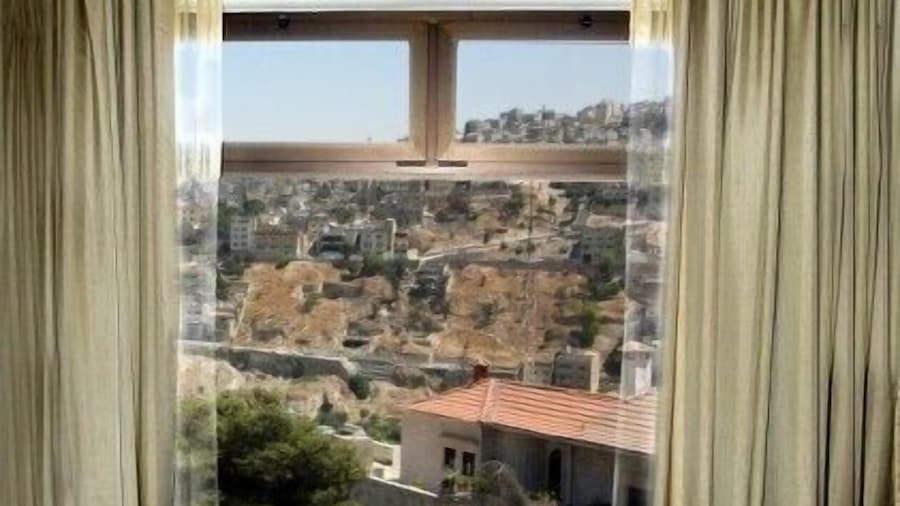
Travel to Mujib Nature Reserve
- Plan, book, travel with confidence
Better together
Save up to RM 324 when you book a flight and hotel together*
Find the right fit
With over 300,000 hotels worldwide, it's easy to create a perfect package
Rest easy
Plan, book, and manage your trip all in one place
Mujib Nature Reserve Flight & Hotel Packages
Price found within the past 48 hours. Click for updated prices.


Jabal Amman Hotel
Zahran
per person
17 Sept - 20 Sept
found 1 day ago
Return flight included
Kuala Lumpur (KUL) to Amman (AMM)
8/10 Very Good! (151 reviews)
The place was very outdated but still clean. Staff were helpful. Breakfast was very limited, unappealing. Location was close to many walkable places and restaurants. Sufra Restaurant is a must.
Reviewed on 11 Jun 2025

The Conroy Boutique Hotel
Zahran
per person
17 Sept - 20 Sept
found 1 day ago
Return flight included
Kuala Lumpur (KUL) to Amman (AMM)
8.8/10 Excellent! (193 reviews)
The hotel is okay, but the staff are truly wonderful. Jamal, Karim, and Jessica were kind and helpful, going above and beyond to ensure our comfort. The hotel’s location is also a major plus, situated in a lively area with a great variety of restaurants and cafes.
Reviewed on 5 Jul 2025

Jad Hotel Suites
Wadi Al-Seer
per person
17 Sept - 20 Sept
found 1 day ago
Return flight included
Kuala Lumpur (KUL) to Amman (AMM)
8.2/10 Very Good! (56 reviews)
The hotel has nice look and ambience but the rooms leave much to be desired. The room furniture, bathroom, shower, kitchen and living room were in bad shape or not working properly. The room was a non-smoking room but the smoke stench was unbearable and the key card did not work, so they gave me an actual key. The breakfast was subpar but it got delivered when i requested it out of working hours. Service was outstanding and that needs to be recognized.
Reviewed on 21 Mar 2025

Luxury Palace Hotel
Al Swaifyeh
per person
17 Sept - 20 Sept
found 1 day ago
Return flight included
Kuala Lumpur (KUL) to Amman (AMM)
10/10 Exceptional! (3 reviews)
Professional and polite staff, thank you for your cooperation. Clean rooms and excellent location where shops and restaurants are nearby. Will stay here next time :)
Reviewed on 20 Feb 2025
Top hotels in Mujib Nature Reserve

Ma'In Hot Springs
Sowayma, 17173, Dead Sea North, Ma'In
8/10 Very Good! (307 reviews)
"The water falls are amazing it’s a relief for your body and the hotel amenities and water fall close at 10 but the main public one the natural it no longer stays avaible for public so it becomes private for the hotel guests so that’s a very good perk imagine staying under the water fall at night ..."
Reviewed on 6 May 2025

Lava villas
Mukawir, Ma'In
The price is RM1,007 per night from 21 Jul to 22 Jul
RM1,007
RM1,151 total
21 Jul - 22 Jul
includes taxes & fees

Hilton Dead Sea Resort & Spa
Hotels Area, Jordan Valley Highway, Sweimeh
Fully refundableReserve now, pay when you stay
The price is RM582 per night from 12 Jul to 13 Jul
RM582
RM654 total
12 Jul - 13 Jul
includes taxes & fees
8.2/10 Very Good! (745 reviews)
"Beautiful hotel with great outdoor spaces. The staff is incredibly attentive and helpful. We loved our stay there!"
Reviewed on 3 Jul 2025
Lowest nightly price found within the past 24 hours based on a 1 night stay for 2 adults. Prices and availability subject to change. Additional terms may apply.
More trip options
Expedia's Latest Trends
Hotels
IM 96 VillaHotels with Spa in AlabangHotels in Kampung Ru MudaCecil HotelHotels near Beacon HospitalInterContinental Shanghai Ruijin by IHGHotels in SanggauCrown Harbor Hotel BusanAdamson Hotel Kuala LumpurHotel Six SeasonsHotels near Dubai MallHotels near Aeon Jusco Bukit Tinggi Shopping CenterHotels near Gua Tempurung Limestone Caves
Flights
Flights from Kuala Terengganu (TGG) to Sepang (KUL)Flights from Sepang (KUL) to Braunschweig (BWE)Flights from Sepang (KUL) to San Jose (SJC)Flights from George Town (PEN) to Tuban (DPS)Flights from George Town (PEN) to Chengdu (CTU)Flights from Singapore (SIN) to London (LHR)Flights from Miri (MYY) to Limbang (LMN)Flights from Kuala Lumpur (SZB) to Taiping (TPG)Flights to AmmanFlights from Sepang (KUL) to Vientiane (VTE)
* Savings based on package bookings compared to the price of the same components booked separately. Savings not available on all packages.